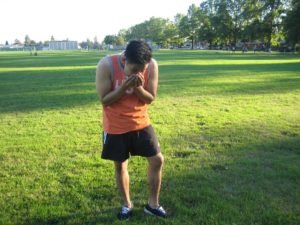Nose bleeds are likely to occur during the winter season. It is important to note that the interior of the nose contains several miniature blood vessels that enable the nose to detect smells. These blood vessels are easily irritated that often leads to nose bleeds.
The combination of cold temperature and dry air increases the risk for ending up with nose bleeds. Luckily, there are measures that can help lessen the frequency for winter-related nose bleeds.
How to prevent nose bleeds

- Only blow the nose if needed. Since cold temperatures increases the flow of mucus, the nose is likely to run more during the winter season. Nevertheless, blowing the nose too often or vigorously can irritate the nasal membranes. When blowing the nose, it must be done in a gentle manner or dab the nose instead. Utilize a soft cloth or tissue to prevent any damage to the nasal area.
- A humidifier can be used in the house to add moisture to the air. The dry winter air makes the blood vessels prone to damage. The humidifier should be cleaned regularly to prevent the growth of fungus.
- Apply petroleum jelly on the interior of the nasal passages. This helps maintain moisture to the nasal cavity, possibly preventing nose bleeds. Other alternatives include the application of an antibiotic cream or a saline nasal spray.
- Avoid spicy foods or hot beverages that can add up to the bleeding. Foods that the individual is allergic to such as wheat or milk can also trigger the inflammation of the blood vessels, thus increasing the risk for nose bleeds.
- Limit the use of medications that are inhaled via the nose such as the nasal decongestant sprays for common cold and flu symptoms during the winter. These inhaled medications can irritate the nasal lining and trigger more episodes of nose bleeds.
Quick Note / Disclaimer
The material posted on this page on nose bleeds during winter is for learning and educational purposes only. To learn to manage and prevent one, register for a first aid and CPR course with Saskatoon First Aid.
